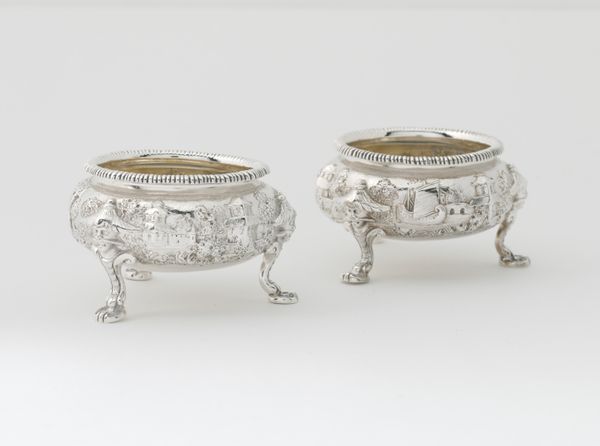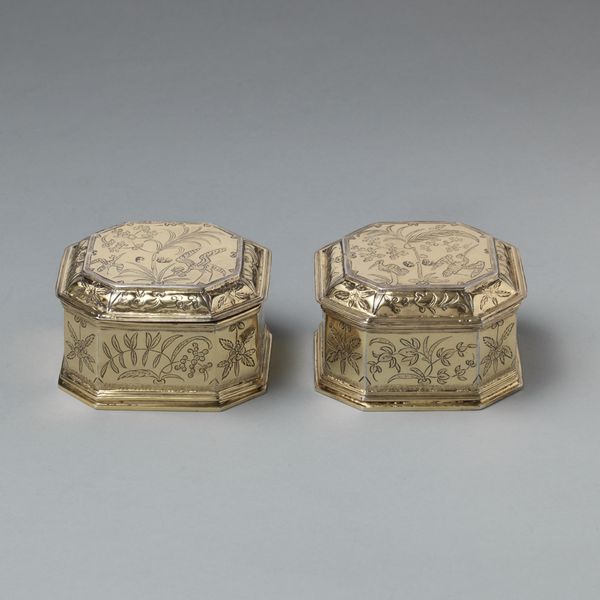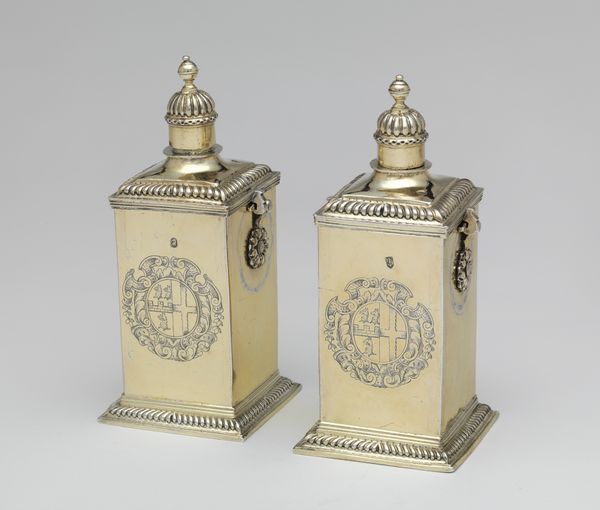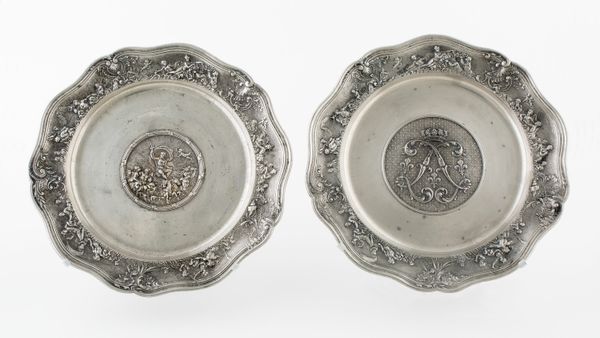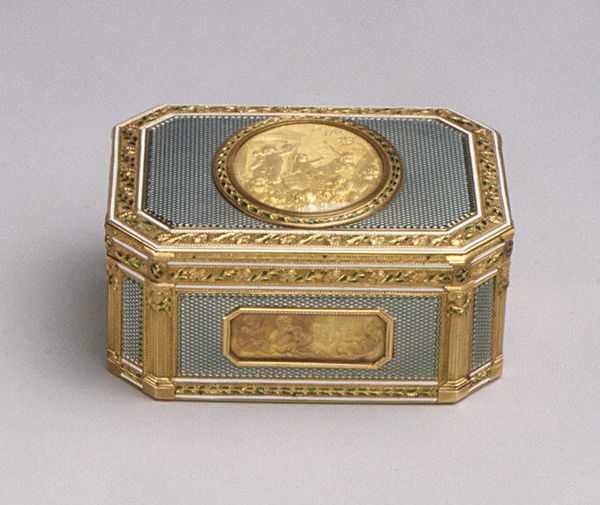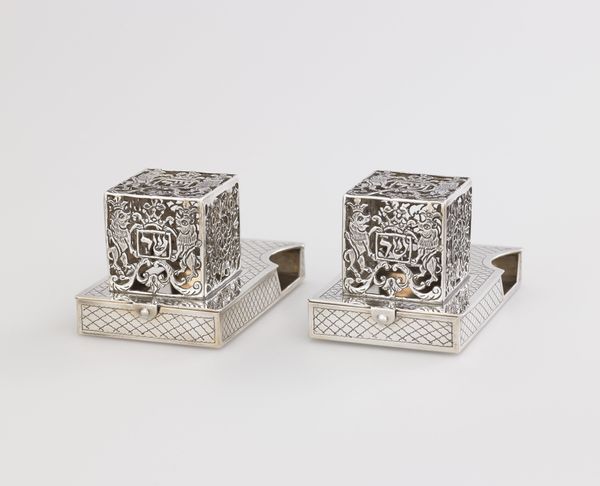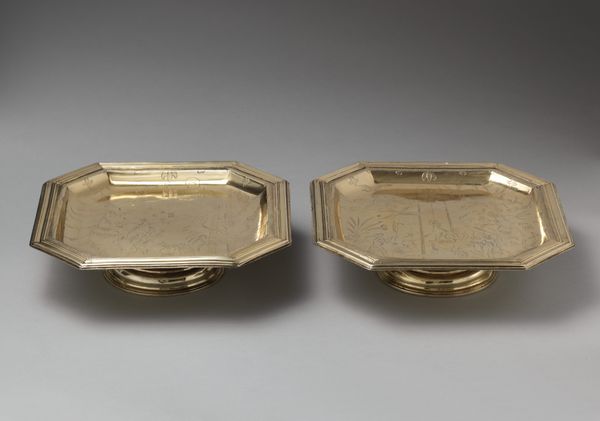
silver, metal, gold, sculpture
#
silver
#
metal
#
gold
#
sculpture
#
decorative-art
Dimensions: 11.4 × 8.3 × 8.9 cm (4 1/2 × 3 1/4 × 3 1/2 in.)
Copyright: Public Domain
Editor: Here we have William Barnard's *Pair of Tea Caddies*, dating from 1878 to 1879. They’re crafted from silver and gold and currently reside at the Art Institute of Chicago. They seem incredibly ornate...almost excessively so. What can you tell me about them? Curator: Ornate is a good word for them. They really exemplify the aesthetic excesses of the late 19th century. It's important to think about the historical context: this was an era of vast colonial expansion, where goods and motifs from Asia, especially China and Japan, were highly prized and incorporated into Western design. Look at the details – what do you notice? Editor: The lids have little birds on them, and the bodies of the caddies have these scenes with herons and trees... definitely Asian motifs. I guess that makes sense given that they’re for tea. Curator: Precisely. But think more critically about what these "exotic" motifs represented. They signified wealth, power, and the supposed refinement of the owner. Owning such items allowed one to perform one’s social status. The consumption of tea itself was already heavily racialized through the opium wars. So, do you think the caddies aestheticize a very complicated, exploitative global network? Editor: Wow, I hadn't thought about that at all. So, these seemingly harmless tea caddies are actually signifiers of colonial power dynamics? Curator: Absolutely. The materials themselves – silver and gold – speak to the vast resources extracted from colonized lands. It's crucial to recognize that even beautiful objects can be deeply implicated in systems of oppression. What do you make of that? Editor: I find it really powerful and somewhat disturbing. It's forced me to look at decorative art in a whole new way. I'll definitely consider that next time I look at similar artworks. Curator: Exactly. That's why it is always key to understand art beyond the surface and seek its profound historical ties to challenge traditional ideas.
Comments
No comments
Be the first to comment and join the conversation on the ultimate creative platform.
